A UK engineer recently lost over $25 million to what sounded like a genuine video call with his CFO. But the person on the screen wasn’t real, it was a deepfake, created by a malicious actor using generative AI. This wasn’t just AI-generated mischief; it was a full-scale fraud, exposing how vulnerable even seasoned professionals can be to emerging threats.
If this story didn’t jolt you, let it sink in: fake faces and voices can now be weaponised. And with AI scams reportedly quadrupling in the past year, organisations and individuals urgently need to adapt. Simply relying on emails or phone checks is no longer enough. This scam highlights the crucial role of cybersecurity—both for defence and for building a smarter, more alert workforce.
In this article, you’ll discover:
- How this $25 million deepfake scam worked
- How AI-enabled fraud is escalating globally
- Why strong cybersecurity systems are no longer optional
- How you or your start-up can guard against deepfake risks
- Why cybersecurity is exploding as a field—and how to jump in
How the Scam Worked
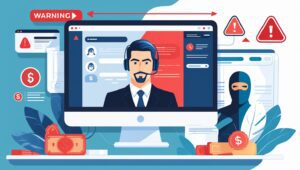
Here’s a breakdown of how the fraud unfolded:
- Deepfake impersonation: The scammer used AI to create a convincing video call that mimicked the CFO’s appearance, voice, and tone.
- Urgent financial request: During the call, the scammer pressured the engineer to approve a large fund transfer “due to confidentiality.”
- Lack of verification: No multi-step authentication or secondary approval was used.
- The blind transfer: Believing they were following protocol, the engineer authorised over $25 million in transfers.
- Too late: By the time the fraud was noticed, tracing and retrieving the money was nearly impossible.
What exactly had happened:
Take, for example, a recent deepfake scam in the UK that cost a company £25 million. The attackers used AI to create a highly convincing deepfake video, mimicking a senior executive using publicly available footage and voice data. The video appeared authentic and was used to deliver an urgent financial request to an employee. Under pressure and perceiving it as a legitimate instruction from a superior, the employee authorised the payment without any additional verification or approval process. The fraud wasn’t uncovered until weeks later—by which point, the funds had vanished. This case underscores how today’s threats exploit not just technical vulnerabilities but human behaviour and organisational blind spots. It highlights the urgent need for layered safeguards that include people, processes, and AI verification tools—not just traditional data protection.
key takeaway:
Visual recognition and audio tone would no longer guarantee authenticity. Cybersecurity must now extend beyond preventing malware and it must protect against AI-powered social engineering.
The Rise of Deepfake Scams
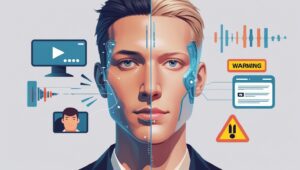
Deepfake fraud is not limited to any region or continent. It’s a global surge:
- Fraudsters are scaling up: With just a few hours of audio or a few photo frames, realistic voice and video can be synthesised.
- Business imposters: Fake CEOs have already duped employees and partners into revealing trade secrets or wiring funds.
- Customer scams: AI-generated voices now impersonate bank helpline staff, tricking victims into providing OTPs or passwords.
- Qualitative leap in deception: Early deepfakes were glitchy. Today’s are nearly indistinguishable—AI is closing the realism gap fast.
A recent study found AI-driven cyber fraud increased by 300–400% in the last year, especially in sectors with financial power or need for secrecy.
What used to be sci-fi has become reality now. Cybersecurity can’t wait—it must grow smarter faster.
Why Cybersecurity Matters More Than Ever
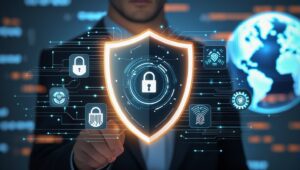
Here’s why traditional cybersecurity measures must evolve:
- Multi-factor verification is essential. Never rely on a single confirmation channel. Ask for verification over different platforms.
- Zero-trust architecture works in your favour. Don’t assume internal or familiar contacts are safe.
- Employee cybersecurity awareness training must include deepfake recognition. Teach your team to question oddly urgent or out-of-band requests—even if they appear legitimate.
- Use AI-based detection tools. These can identify voice or image tampering, background inconsistencies, or timing anomalies.
- Apply strong corporate governance. Split approval duties, maintain audit logs, and confirm with witnesses for high-value transactions.
In short: Cybersecurity isn’t only about defending networks—it’s about building organisational resilience in the face of advanced deception.
How to Defend Yourself and Your Business
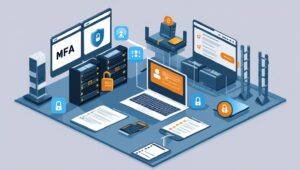
Here are actionable steps anyone can take today:
- Base deepfake detection training into your compliance routines. Even one simulated phishing attack per quarter helps.
- Enforce multi-person approvals for any wire transfer over a defined threshold.
- Check identity across channels: After a video or voice request, call a known landline or ask for a message via secure chat.
- Consider technical detection tools: Services that analyse voice cadence, micro-expressions, or other AI markers can flag deepfakes.
- Maintain suspicion: AI’s realism makes trust fragile. Instill caution—even for internal requests.
All these steps dramatically reduce risk. And they don’t require enterprise-level budgets—just smart, strategic planning.
Cybersecurity: A Career Poised for Explosive Growth
Cybersecurity isn’t just a textbox in your resume—it’s a mission. Here’s why this moment is your opportunity:
- Regulatory pressure is rising. Governments and regulators are now requiring fraud detection and resilience programs.
- Corporate budgets are pouring into cyber: From startups to banks, organisations need people who can design, implement, and enforce next-gen controls.
- New roles are emerging: Deepfake detection analyst, social engineering specialist, AI-augmented incident responder.
- Training and skills are accessible: Certificates like CEH, OSCP, and tailored cybersecurity degree programs are widely available—especially in tech hubs like Bengaluru and Hyderabad. check out Digived’s CEH certification training
- High-demand and high-impact work: Cybersecurity professionals not only protect data—they save reputations, money, and even jobs.
If you’re intrigued by tech, problem-solving, and having a real-world impact, cybersecurity could be the ideal career for you.
Your Cybersecurity Career Starter Roadmap
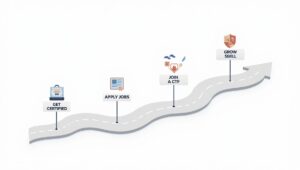
Ready to dive in? Here’s a roadmap:
Learn the basics: Start with an online or offline course in cybersecurity fundamentals. Focus on social engineering, phishing, and threat detection.
Earn a certification: CEH, CompTIA Security+, OSCP—choose one that aligns with your interests.
Build your portfolio: Participate in Capture-the-Flag (CTF) events, bug bounty platforms, and AI-fraud labs.
Stay informed: Follow reliable cyber news, deepfake fraud incidents, and case studies.
Look for cybersecurity roles: Join entry-level positions in security operations, incident response, or risk analysis. Cloud providers, startups, and financial firms are hiring.
Keep evolving: Study deep learning in cybersecurity, hone skills in AI defence, and stay curious about adversity detection.
also read: Digived cyber security training with placement guarantee in Bengaluru
The Broader Trend: Cybersecurity in the Age of AI

Deepfake scams aren’t the only AI-powered threats, there are more advanced threats such as:
- Automated spear-phishing systems send tailored emails by day and adjust tone by night.
- AI malware mutations evade detection by learning detection patterns.
- AI-based scanning tools map network flaws faster than humans.
Defenders fight fire with fire. AI-run SOCs (Security Operations Centers), live anomaly analysis, and adaptive authentications are being used to outpace attackers.
But keeping pace requires more cybersecurity talent, deeper skills, and sharper awareness—and it needs to start now.
Final Thoughts & Call to Action

The UK engineer’s $25 million loss was more than a redemption story—it was a warning. As AI capabilities explode, so do the social and technical fronts of cyberattacks.
What can you do today?
- Train yourself or your team to spot deepfakes and multi-step impersonations.
- Implement zero-trust policies and multi-factor approvals.
- Take actionable cybersecurity training. Even one online course or certificate can be transformative.
- Explore cybersecurity as a career. If you’re driven by tech, problem-solving, and real-world impact, you’re in the right place.
Cyber threats evolve—and so can you. Equip yourself with knowledge and tools. Stay informed. Stay alert. And help build systems that protect trust in an unpredictable world.
“AI can mimic your boss—but cybersecurity ensures it can’t fool your judgement.”
If you’re looking forward to learn Ethical hacking from one of the best institutes in Bengaluru with better placements, we are here to help you. Visit Digived Academy to learn more about our Cybersecurity Training programs and start your journey as cybersecurity professional today.
Contact Us
For more information about our courses, schedules, and enrolment process, visit our website or contact us at.
Website: www.digived.academy
Email: admission@digived.academy
Phone: +91-9019299971



